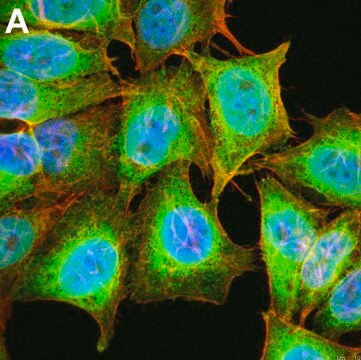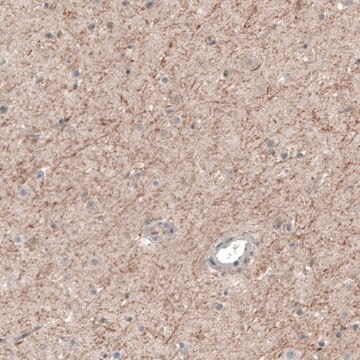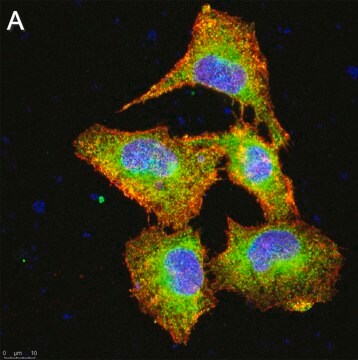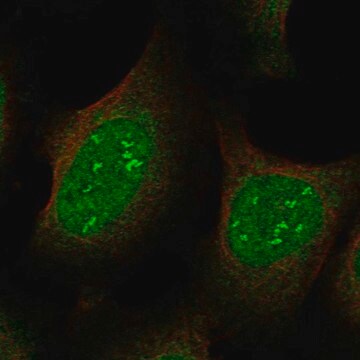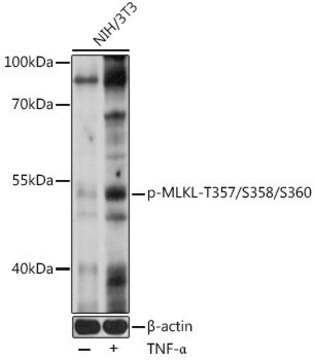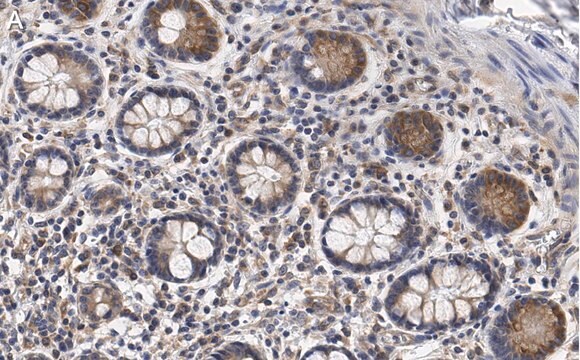MABF920
Anti-SAP/SH2D1A Antibody, clone 1A9
clone 1A9, from rat
Sinónimos:
SH2 domain-containing protein 1A, Signaling lymphocytic activation molecule-associated protein, SLAM-associated protein, T-cell signal transduction molecule SAP
About This Item
WB
western blot: suitable
Productos recomendados
biological source
rat
Quality Level
antibody form
purified antibody
antibody product type
primary antibodies
clone
1A9, monoclonal
species reactivity
mouse, human
technique(s)
flow cytometry: suitable
western blot: suitable
isotype
IgG2aκ
NCBI accession no.
UniProt accession no.
shipped in
wet ice
target post-translational modification
unmodified
Gene Information
human ... SH2D1A(4068)
General description
Specificity
Immunogen
Application
Inflammation & Immunology
Immunological Signaling
Flow Cytometry Analysis: A representative lot immunostained wild-type, but not sh2d1a-knockout, murine peripheral blood CD3+CD4+ lymphocytes (Zhong, M.C., and Veillette, A. (2013). Mol. Cell. Biol. 33(6):1223-1232).
Western Blotting Analysis: A representative lot detected SAP, but not EAT-2 or ERT, exogenously expressed in the mouse mature mouse T cell line BI-141 (Roncagalli, R., et al. (2005). Nat. Immunol. 6(10):1002-1010).
Quality
Flow Cytometry Analysis: 0.1 µg of this antibody detected SAP/SH2D1A in mouse splenocytes.
Target description
Physical form
Storage and Stability
Other Notes
Disclaimer
¿No encuentra el producto adecuado?
Pruebe nuestro Herramienta de selección de productos.
Storage Class
12 - Non Combustible Liquids
wgk_germany
WGK 1
flash_point_f
Not applicable
flash_point_c
Not applicable
Certificados de análisis (COA)
Busque Certificados de análisis (COA) introduciendo el número de lote del producto. Los números de lote se encuentran en la etiqueta del producto después de las palabras «Lot» o «Batch»
¿Ya tiene este producto?
Encuentre la documentación para los productos que ha comprado recientemente en la Biblioteca de documentos.
Nuestro equipo de científicos tiene experiencia en todas las áreas de investigación: Ciencias de la vida, Ciencia de los materiales, Síntesis química, Cromatografía, Analítica y muchas otras.
Póngase en contacto con el Servicio técnico
